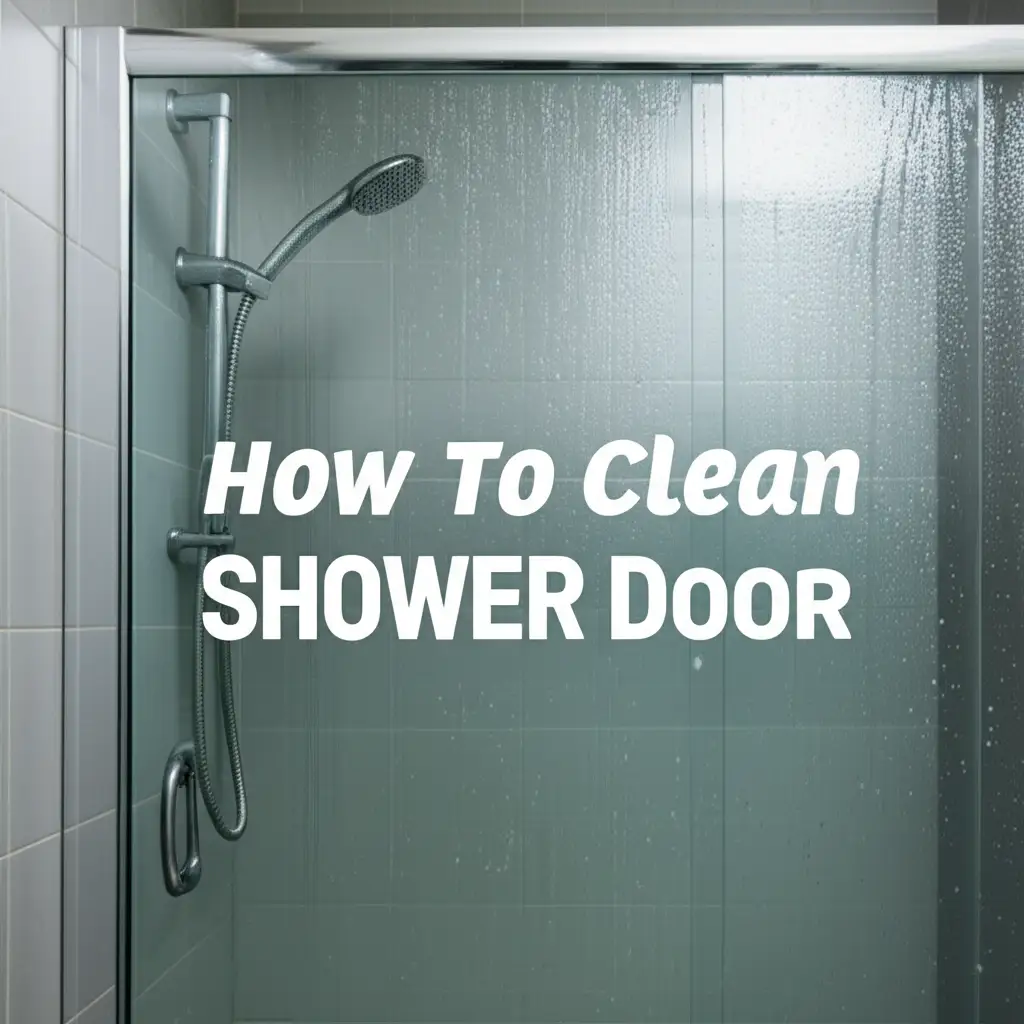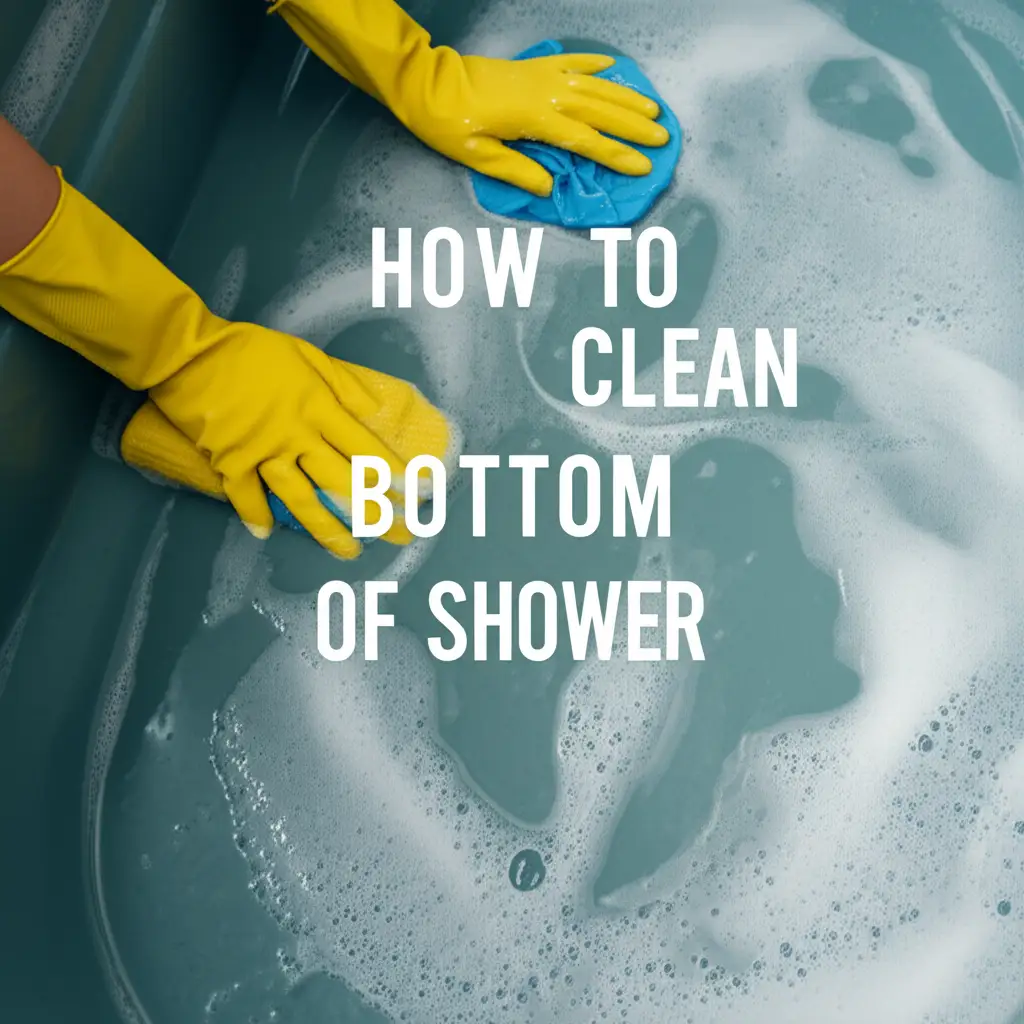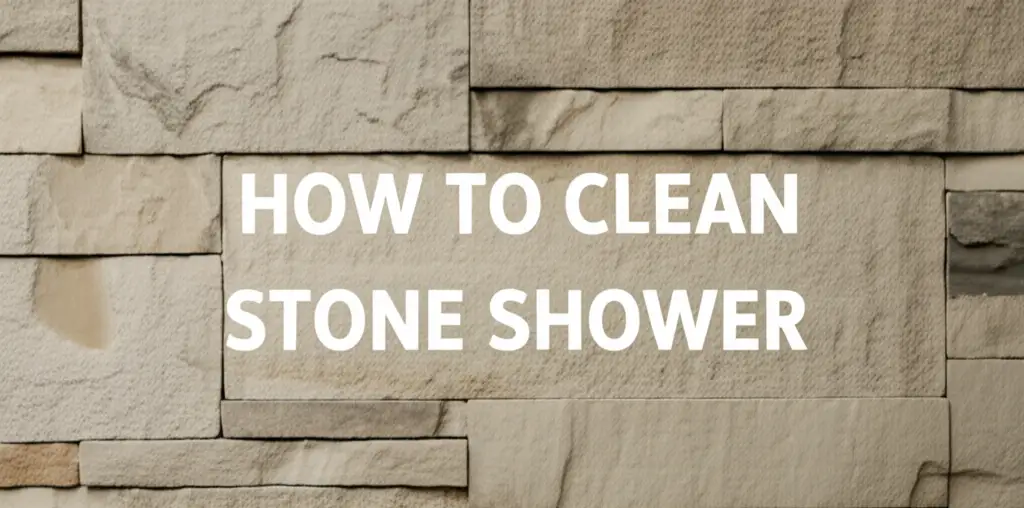· Bathroom Cleaning · 13 min read
How To Clean Overlapping Sliding Shower Doors

How To Clean Overlapping Sliding Shower Doors Effectively
Keeping your bathroom pristine often feels like a never-ending task, especially when it comes to shower doors. If you have overlapping sliding shower doors, you know they present a unique cleaning challenge. The hidden nooks and crannies gather soap scum, hard water deposits, and grime, making your shower look dull. But do not worry. I have faced these challenges too. This guide will walk you through precise steps. We will cover everything from gathering your tools to deep cleaning those tricky overlap areas and preventing future buildup. You will soon enjoy sparkling clean shower doors.
Takeaway
Cleaning overlapping sliding shower doors requires specific attention to the hidden tracks and glass overlap.
- Gather specialized tools like old toothbrushes and microfiber cloths.
- Use natural solutions like vinegar and baking soda for effectiveness.
- Focus on pre-cleaning loose debris before tackling tough stains.
- Address the unique challenges of the overlapping glass panes.
- Clean the shower door tracks thoroughly to prevent grime buildup.
- Implement regular maintenance to keep doors sparkling clean.
To effectively clean overlapping sliding shower doors, first remove loose debris from tracks. Then, apply a mixture of white vinegar and dish soap to glass and tracks. Let it sit, scrub with a brush or microfiber cloth, paying extra attention to the overlap and corners. Rinse thoroughly for a spotless finish.
Understanding Your Overlapping Shower Doors
Overlapping sliding shower doors add a sleek look to any bathroom. They save space, which makes them very popular. However, their design creates specific cleaning hurdles. The way one glass panel slides over the other leaves a small gap. This gap becomes a perfect trap for water, soap residue, and grime.
Dirt builds up in this hidden area. Regular wiping often misses these spots. Hard water minerals cling to the glass surfaces. Soap scum creates a cloudy film. Over time, these issues make your shower doors appear dirty and neglected. The tracks also collect debris. Hair, dust, and product residue combine with moisture, forming a sticky mess. Understanding these problem areas is the first step toward effective cleaning. We need to focus on these hidden spots. My own experience taught me that ignoring them makes the job harder later.
The overlapping design also means some glass surfaces are less accessible. You cannot simply wipe both sides of the glass at once. You must consider how the doors move. This helps you reach all surfaces. Getting rid of the gunk in these tight spaces requires a bit of strategy. But with the right approach, you can make your overlapping shower doors shine.
Gathering Your Essential Cleaning Tools and Solutions
Before you begin the cleaning process, you need the right tools. Having everything ready saves time and effort. I always make sure I have my supplies on hand. This prevents interruptions during cleaning.
First, you will need a few basic items. Microfiber cloths are excellent for glass surfaces. They do not leave streaks. A spray bottle is essential for applying solutions. A small brush, like an old toothbrush or a grout brush, is vital. It helps you reach into tight corners and tracks. A squeegee is also very helpful for streak-free drying.
For cleaning solutions, natural options often work best. White vinegar is a powerful natural cleaner. It helps dissolve soap scum and hard water stains. Baking soda is another fantastic natural abrasive. It tackles tough grime without scratching surfaces. You can mix these for a potent cleaning paste. For really stubborn issues, a mild dish soap can be added. It breaks down greasy residues. I often rely on how to clean with vinegar and baking soda for tough jobs. Sometimes, commercial glass cleaners are helpful too. Choose one that is streak-free and safe for shower doors. Make sure to check product labels.
Here is a list of what you will need:
- Microfiber cloths (at least two)
- Spray bottle
- Small brush (old toothbrush or grout brush)
- Squeegee
- White vinegar
- Baking soda
- Mild dish soap (optional)
- Warm water
- Small bowl for mixing
- Rubber gloves (to protect your hands)
- Paper towels or old rags for initial wipe-downs
Having these items prepared makes the job much smoother. It also ensures you can tackle any type of dirt you encounter.
Tackling Stubborn Soap Scum and Grime
Soap scum is a common enemy for shower doors. It forms when soap minerals mix with hard water. This creates a dull, cloudy film on your glass. Getting rid of it needs a specific approach. My first step is always to loosen the buildup.
Start by pre-rinsing the doors with warm water. This wets the surface and helps loosen some loose grime. Then, prepare your cleaning solution. For moderate soap scum, a simple vinegar solution works wonders. Mix equal parts white vinegar and warm water in a spray bottle. Spray the entire glass surface generously. Pay extra attention to areas with heavy soap scum. Let the solution sit for at least 15-20 minutes. This gives the acid in the vinegar time to break down the scum. For a deeper dive into cleaning these issues, check out how to clean soap scum from glass shower doors.
For more stubborn grime, create a paste using baking soda and a little water. Apply this paste directly to the affected areas. You can also mix baking soda with dish soap. This adds more grease-cutting power. Gently scrub the paste onto the glass using a non-abrasive sponge or microfiber cloth. For really thick buildup, you might need to repeat this process. I sometimes find that applying the paste and letting it sit for an hour helps significantly. Using how to clean shower with baking soda gives great insights into this method.
After the solution has sat, use your microfiber cloth to scrub the glass. Work in small circular motions. Then, rinse the doors thoroughly with warm water. Use a squeegee to remove excess water for a streak-free finish. Always wipe down the squeegee blade after each pass. This prevents transferring dirt back onto the glass. You will see a dramatic improvement.
Conquering Hard Water Stains on Glass
Hard water stains are another persistent problem for shower doors. These chalky white spots are mineral deposits left behind when water evaporates. They make your beautiful glass look spotted and cloudy. I have battled these many times.
White vinegar is your best friend against hard water stains. Its acidity helps dissolve mineral buildup. Fill a spray bottle with undiluted white vinegar. Spray a liberal amount onto the dry glass. Ensure the entire stained area is saturated. Let the vinegar sit for at least 30 minutes. For severe stains, you can let it sit for an hour or even longer. The longer it sits, the more time it has to break down the mineral deposits. For extensive information on this, refer to how to clean hard water stains on shower glass.
After letting the vinegar soak, scrub the stained areas with a non-scratch scrub pad or a stiff brush. You might need to apply a bit of elbow grease. For very stubborn spots, make a paste of baking soda and vinegar. Apply this paste directly to the stain. Let it fizz and work for a few minutes. Then, gently scrub it away. This combination provides a gentle abrasive action that helps lift the minerals.
Once you have scrubbed, rinse the glass thoroughly with clean water. Use your squeegee to wipe the glass dry immediately. This prevents new water spots from forming. You can also use a clean, dry microfiber cloth to buff the glass to a sparkling shine. If some stains remain, repeat the process. Consistency is key when dealing with tough hard water buildup. With persistence, your shower glass will be crystal clear again.
Deep Cleaning the Tracks and Channels
The tracks and channels of overlapping sliding shower doors are notorious dirt traps. They collect water, soap scum, hair, dust, and other debris. This creates a slimy, blackish buildup. Cleaning these areas is crucial for both hygiene and door function. My strategy involves a multi-step attack on this grime.
First, remove any loose debris. Use a vacuum cleaner with a brush attachment to suck up dry dirt. A handheld dustbuster works well here. You can also use a stiff brush or an old toothbrush to dislodge particles. I often run a dry cloth along the tracks to pick up what the vacuum misses. This initial step prevents turning dry gunk into muddy sludge.
Next, apply your cleaning solution. A mixture of white vinegar and warm water is excellent. Pour or spray it directly into the tracks. Make sure the solution saturates the entire length of the channels. For very stubborn buildup, create a baking soda paste. Sprinkle baking soda generously into the wet tracks. Then, pour a little vinegar over the baking soda. It will fizz, helping to lift the grime. Let this mixture sit for 15-30 minutes. This allows the cleaning agents to break down the accumulated dirt and mold.
Now, for the scrubbing. This is where your small brush comes in handy. Use an old toothbrush or a specialized grout brush. Dig into the corners and crevices of the tracks. Scrub vigorously to dislodge the softened grime. You will be amazed at what comes out. For really tight spots, a cotton swab dipped in vinegar can reach where brushes cannot. After scrubbing, wipe out the loosened grime with a damp cloth or paper towels. You might need to rinse the tracks with a small amount of clean water and wipe again. Ensure all residue is gone. Clean tracks not only look better but also allow your doors to slide smoothly.
Reaching the Overlap: The Hidden Challenge
The overlapping section of your sliding shower doors presents a unique cleaning hurdle. This is the area where one glass panel slides behind or in front of the other. It is often wet, poorly ventilated, and notoriously difficult to reach. This area becomes a prime spot for mold, mildew, and stubborn grime. I discovered that you need a specific approach to conquer this hidden zone.
First, understand the door movement. Most sliding doors can be lifted slightly out of their bottom track. This can give you better access. Consult your shower door manual if you are unsure. If you can lift one door, carefully do so. Then, gently pivot it away from the other. This creates a larger gap between the overlapping panes. Now, you can reach the inner surfaces of both pieces of glass.
Once you have access, spray the hidden surfaces with your chosen cleaner. A solution of equal parts white vinegar and water works well. For tougher stains or mold, use undiluted white vinegar or a specialized mold cleaner safe for glass. Let the solution soak for 15-20 minutes. This breaks down the accumulated grime. For black mold, ensure you use a product specifically designed to kill mold spores, as simply cleaning the surface may not be enough.
Next, use a long-handled brush or a microfiber cloth wrapped around a flat tool (like a ruler or a paint stirrer) to scrub the inner glass surfaces. An old toothbrush can also get into tight spots. Pay close attention to the very edges of the glass and where the frames meet the glass. These are common spots for buildup. After scrubbing, rinse the area thoroughly. Use a spray bottle filled with clean water. Finally, wipe down the glass with a clean microfiber cloth or use your squeegee carefully. Ensuring this area is dry helps prevent immediate re-growth of mold or mildew. Regular cleaning of this overlap will keep your doors spotless.
Preventing Future Buildup and Maintaining Shine
After all that hard work, you want your overlapping sliding shower doors to stay clean. Preventing future buildup is easier than deep cleaning accumulated grime. I have found that a few simple habits make a world of difference. Consistency is key here.
First, invest in a good quality squeegee. After every shower, take a minute to squeegee down the glass. Start from the top and work your way down. Overlap each stroke slightly. This removes water droplets before they can evaporate and leave mineral deposits. It takes less than a minute. This single habit dramatically reduces hard water stains and soap scum buildup. Keep the squeegee hanging conveniently inside the shower.
Second, use a daily shower spray. Many commercial products are available. You can also make your own. A mix of one part white vinegar, one part water, and a few drops of dish soap works well. Keep a spray bottle of this solution in your shower. After squeegeeing, lightly mist the doors. Do not rinse it off. The ingredients work to prevent new soap scum and water spots from forming. This makes your weekly or bi-weekly cleaning much easier.
Third, ensure proper ventilation in your bathroom. High humidity promotes mold and mildew growth. Run your exhaust fan during and after your shower. If you do not have a fan, open a window or leave the bathroom door ajar. This helps dry out the shower area faster. Drying the entire shower, including the doors and tracks, is crucial. If possible, wipe down the tracks after each use. A quick wipe with a paper towel can remove standing water and prevent dirt from settling. These small, consistent actions will keep your overlapping sliding shower doors looking sparkling clean with minimal effort.
FAQ Section
How often should I clean overlapping shower doors?
You should squeegee your shower doors after every use. A quick daily spray can also help. A thorough deep cleaning, focusing on the overlap and tracks, is recommended once a week or every two weeks. This prevents major buildup.
Can I use commercial cleaners on my shower doors?
Yes, you can use commercial shower door cleaners. Always check the product label to ensure it is safe for your specific type of glass and finishes. Some cleaners contain harsh chemicals that can damage certain materials. Follow instructions carefully.
What is the best way to clean the bottom track of a sliding door?
The best way is to first vacuum or wipe out loose debris. Then, apply a baking soda paste and spray with vinegar. Let it sit, then scrub with an old toothbrush or small brush. Rinse thoroughly with water.
How do I remove black mold from shower door seals?
For black mold on seals, spray undiluted white vinegar on the affected areas. Let it soak for an hour or more. Scrub with a stiff brush. For tougher mold, a bleach-based cleaner diluted with water can be used, but ensure proper ventilation and wear gloves.
Is it safe to use vinegar on all types of shower glass?
White vinegar is generally safe for most glass shower doors. However, avoid using it on natural stone (like marble or granite) surfaces nearby, as its acidity can etch them. Always test a small, inconspicuous area first if you are unsure about your glass or frame material.
Conclusion
Cleaning overlapping sliding shower doors might seem like a daunting task at first, but with the right approach and tools, it becomes entirely manageable. We have covered the unique challenges these doors present, from tackling stubborn soap scum and hard water stains to deep cleaning those often-ignored tracks and the tricky overlapping glass sections. My experience shows that consistent effort makes a big difference.
By preparing your cleaning supplies, using natural solutions like vinegar and baking soda, and focusing on the hidden areas, you can restore your shower doors to their former sparkle. Remember to squeegee after every shower and consider a daily spray to prevent future buildup. These small habits will save you significant time and effort in the long run. Embrace these tips to maintain a clean and inviting bathroom space. Your sparkling clean overlapping sliding shower doors will be a testament to your efforts.
- sliding shower doors
- shower door cleaning
- hard water stains
- soap scum removal
- shower maintenance




